I'm building a small 3D engine for a game I'm working on. I've got my basics sorted: textured triangles with backface culling. However depth sorting is proving to be a difficult problem.
I'm calculating the face Z by averaging out the 3 points that make up the triangular face. The longer faces sometimes overlap the smaller faces since they have a larger Z value and therefore rise up in the depth sorted display list.
How do I fix this? I'm sure there are known depth sorting techniques if I can only get some practical help in programming them. I've build the render pipeline myself so I have access to all the required data - triangles, points, textures, UV coordinates, etc.
Cathedral rendered in a 3D program

Cathedral rendered in my 3D engine

